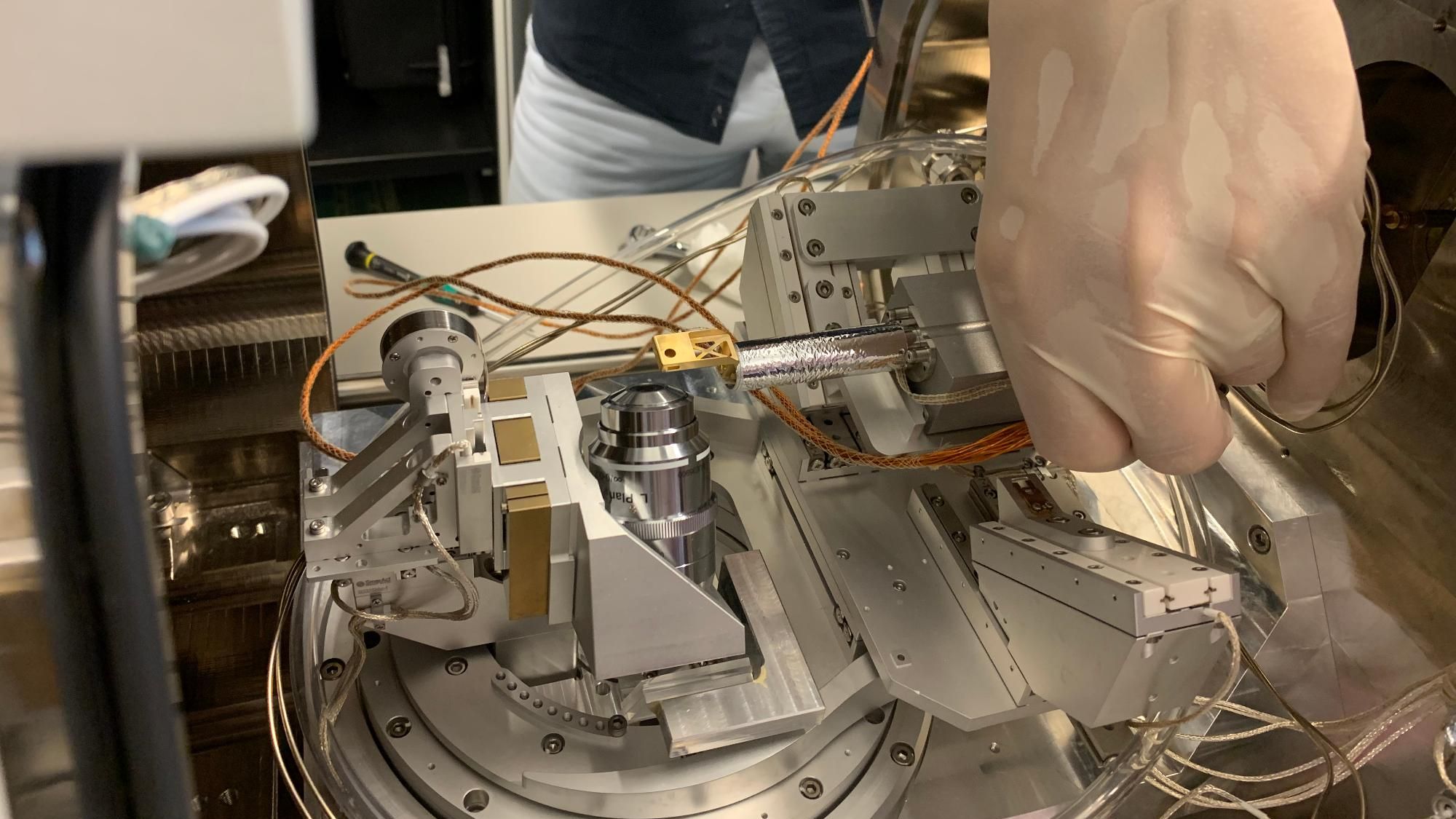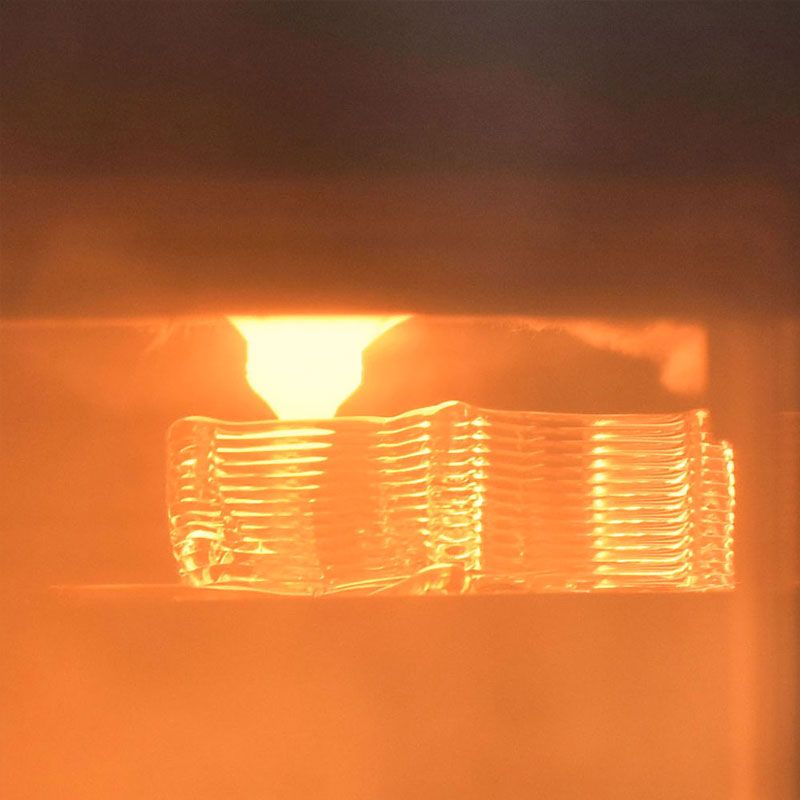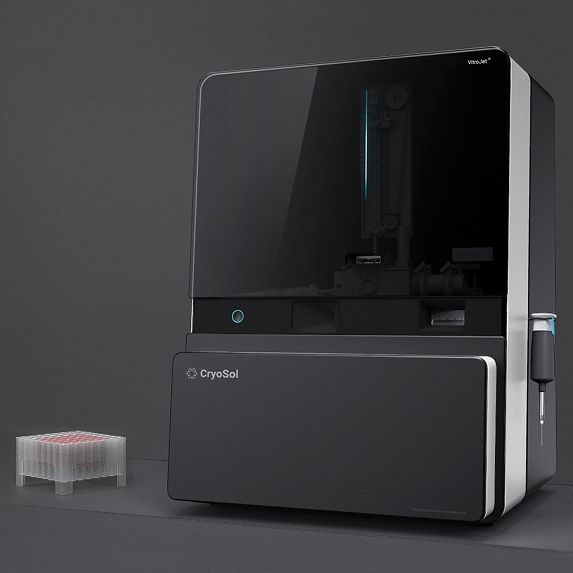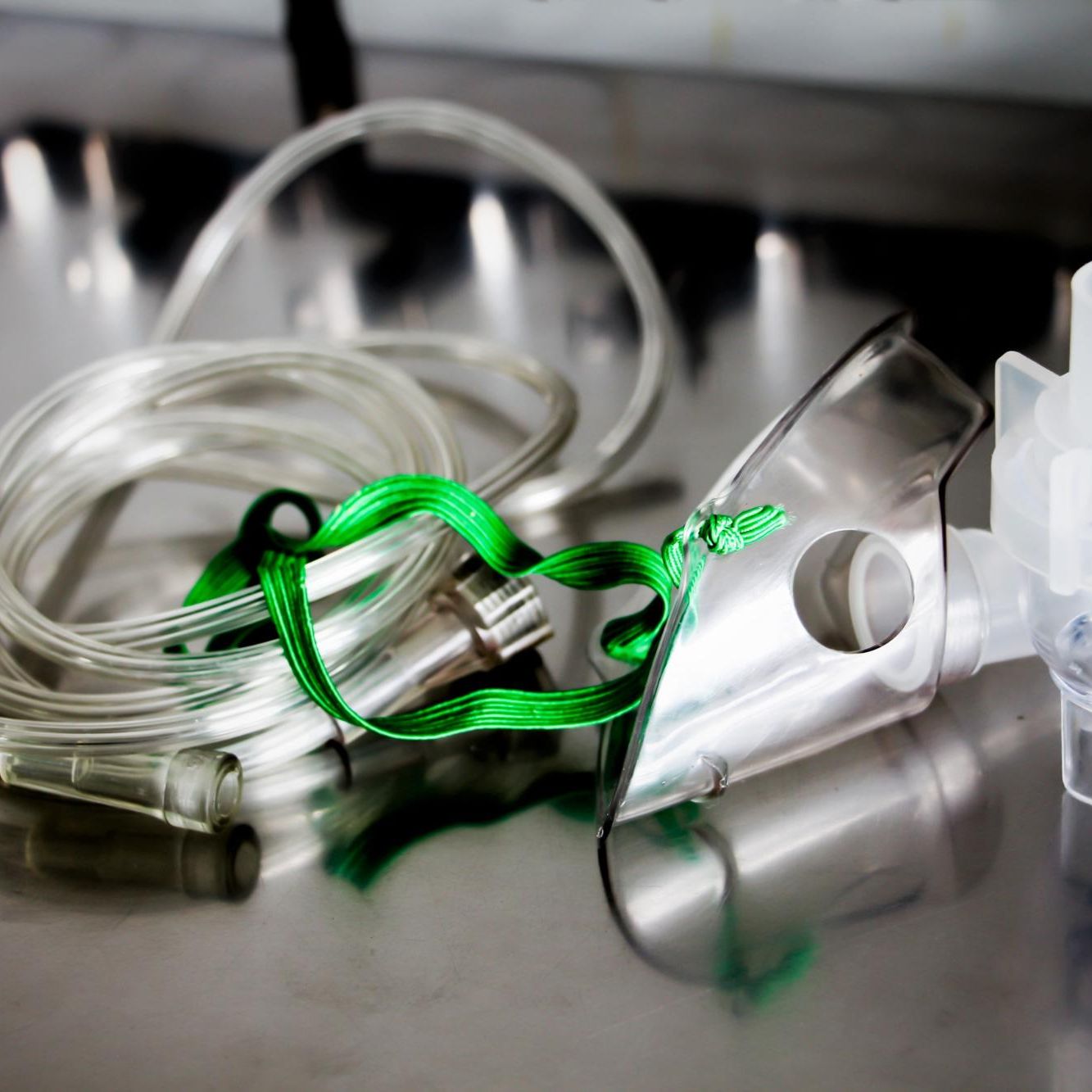
highlights
• virtually vibration-free
• small size
• no mechanical moving parts
• only the sample area is cooled cryogenically
• no liquid nitrogen
no compressor needed.
16 centimeters – that’s all. It suffices to keep cryogenic samples at temperatures between minus 150 to almost minus 200 degrees Celsius. This size allows for easy integration in an electron microscope setup. Various types of sample holders can be connected to a tube the size of a little finger, which houses the cooler: a micro-fluidic chip made with lithography techniques. A small box fixed to the tube contains some tubing and enables mounting: no mechanical parts are involved. This means hardly any vibrations – vital for electron microscopy. The Kryoz cold-stage can be combined with a stage offering six degrees of freedom, enabling sample study from any angle.
The ‘secret’ of the cooler chip is that it allows for an expansion cycle of nitrogen gas through the chip’s channels without a compressor. A very important benefit is the temperature gradient over a tiny distance – from room temperature to almost minus 200 over mere centimeters. Only the sample area is cold, while all surrounding hardware remains at the environmental temperature.
The Kryoz cold-stage is operated with normal nitrogen bottles. The tiny flow makes the system frugal with gas; a bottle will last for a whole week during non-stop operation.
rock solid stability.
At the moment the Kryoz cold-stage typically creates 1 nanometer peak to peak vibrations. Demcon now aims for even better performance: engineers are working on reaching 0.1 nm p2p or lower. Almost as important is thermal drift. Here temperature control is the key to stability. The Kryoz cold-stage has an accuracy better than 10 milliKelvin stabilized temperature control between 100 to 300 degrees Kelvin, retaining drift below 3 nanometers per minute.
The Kryoz cold-stage is already integrated in the Delmic Cryo FIB/SEM. The field of application has now been extended to X-Ray Microscopy (XRM), Transmission Electron Microscopy (TEM) and Laser Scanning Microscopy (LSM).
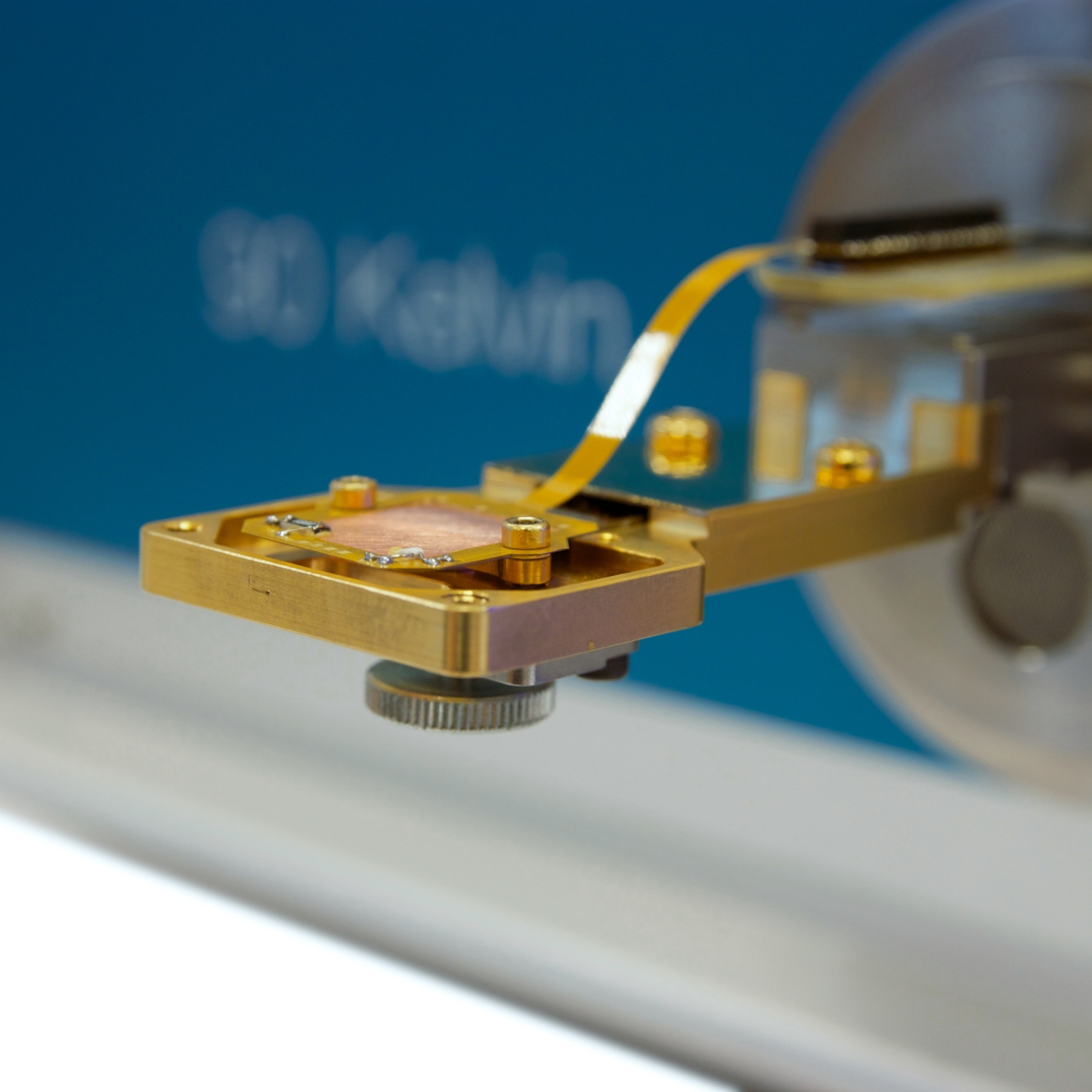
"when rock solid cryocooling is crucial."
Creating a cryocooler that is compatible with the extreme requirements of a scanning electron microscope is a highly challenging assignment. This is due not least because the extremely low levels of thermal drift and vibrations can only be verified by the microscope itself. Concept choices had to be made, based purely on simulations and experience. It’s really cool to see that our predictions and implementations were correct.


